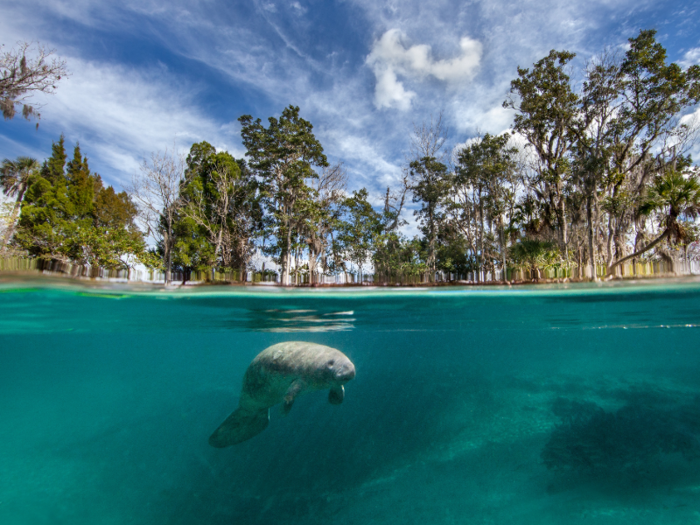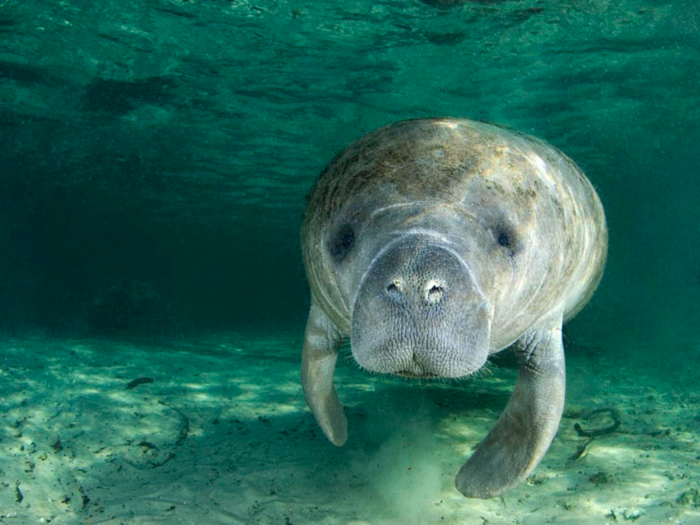- Home
- slideshows
- miscellaneous
- 20 breathtaking photos of manatees in honor of Manatee Awareness Month
20 breathtaking photos of manatees in honor of Manatee Awareness Month
The manatee earned its playful nickname "sea cow" in part because manatee is derived from the Carib word "manati," or "udder."

These gentle giants evolved from elephant-like land mammals almost 50 million years ago.
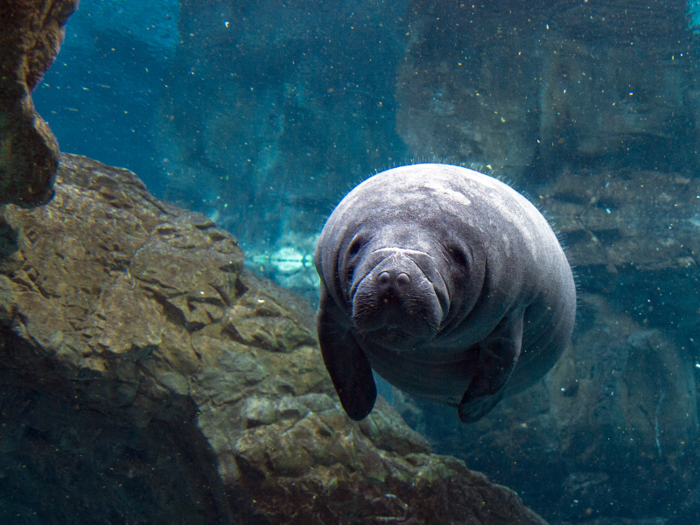
Source: Smithsonian
It is thought that the "mermaids" Christopher Columbus and his crew spotted on their maiden voyage to the Americas were actually manatees.
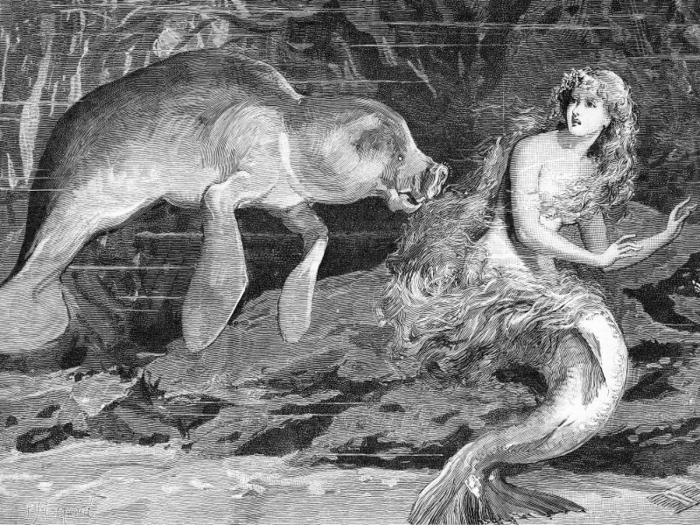
Source: Smithsonian
There are three primary species of manatees — the West Indian manatee, the Amazonian manatee, and the West African manatee.
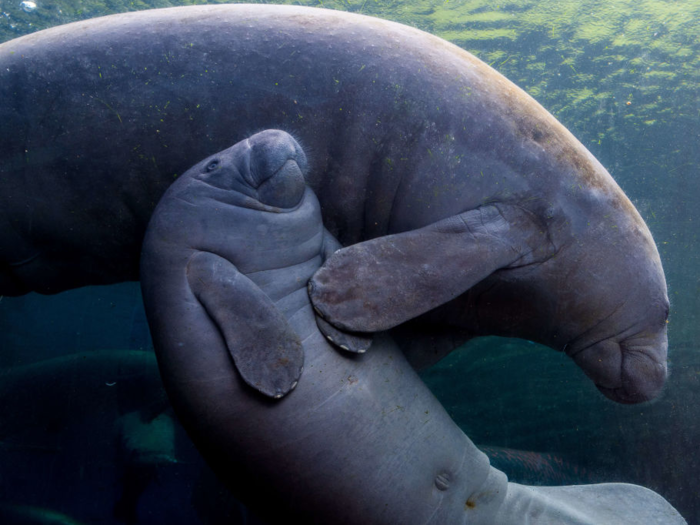
Source: Seaworld Parks and Entertainment
After giving birth, mother manatees will stay with their calves throughout their nursing period, which lasts up to two years.
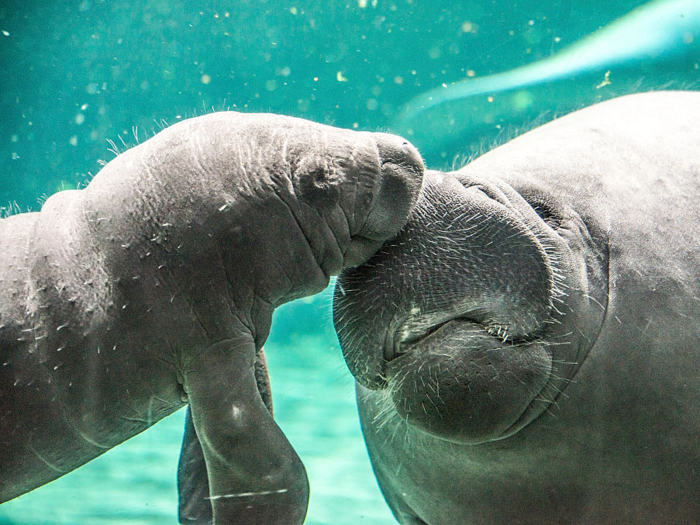
Source: Save the Manatee
Male manatees, on the other hand, take no role in raising their calves as soon as the mating process is over.
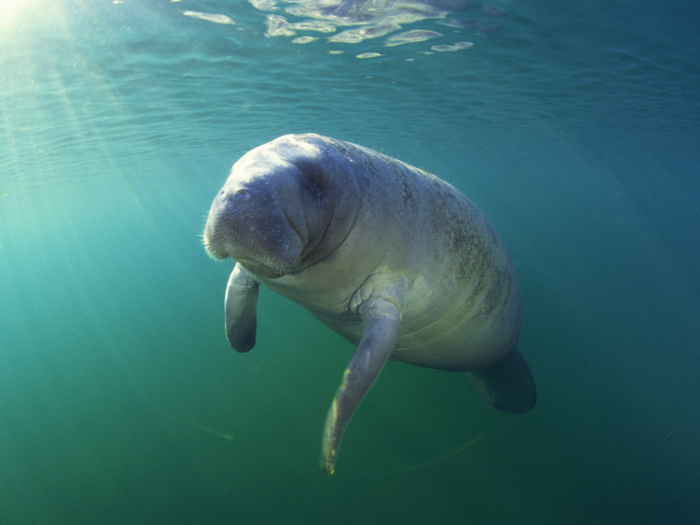
Source: Save the Manatee
While male manatees may not have many paternal instincts, all manatees are equipped with complex social abilities. Manatees communicate through a sophisticated system of underwater clicks and whistles.
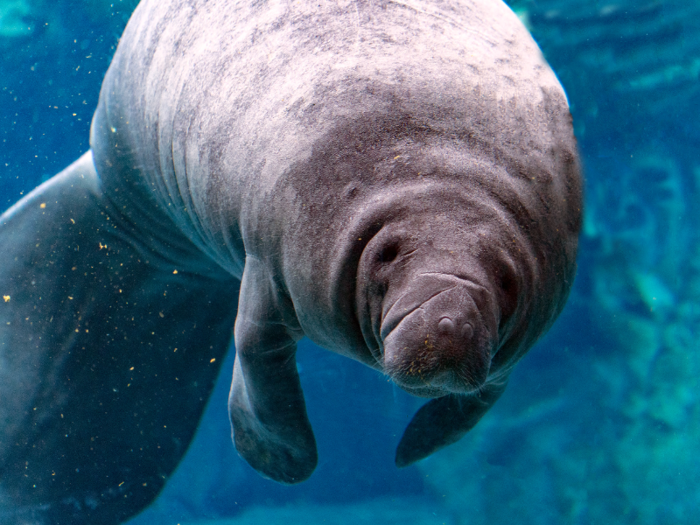
Source: Seaworld
Perhaps contributing to their "sea cow" nickname, manatees can eat up to 10% of their body weight each day.
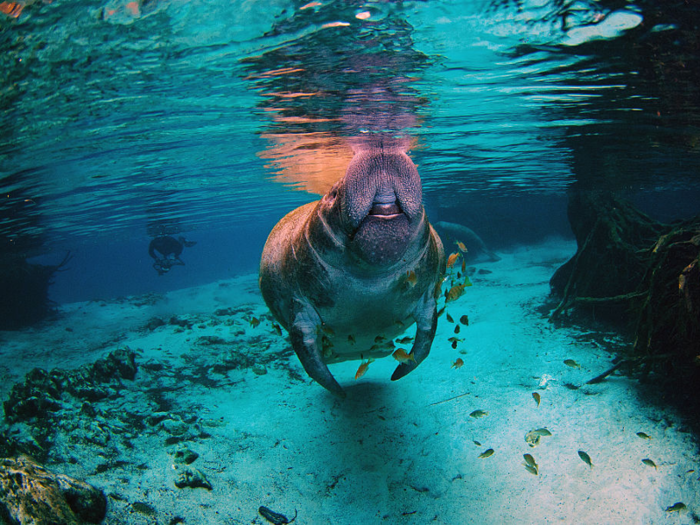
Source: Awesome Ocean
These gentle herbivores spend most of their days grazing on sea plants and resting.
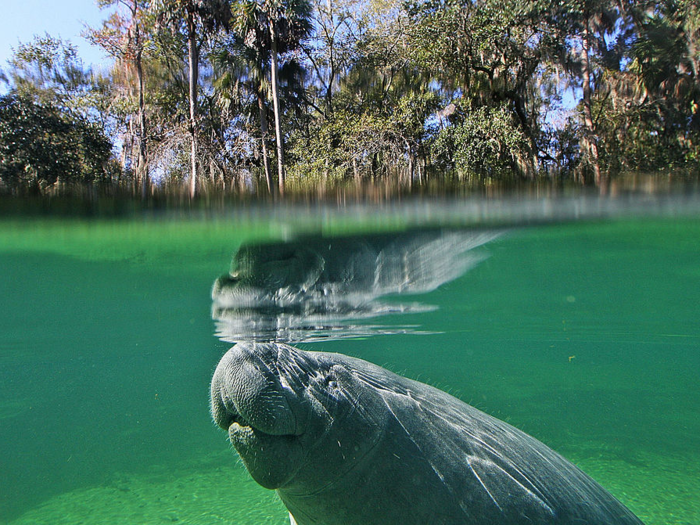
Source: Save the Manatees
So it should come as no surprise that fully grown manatees can weigh over half a ton.
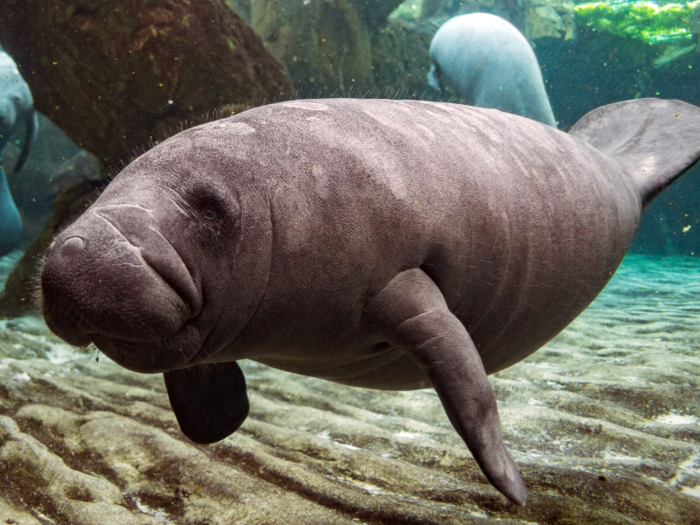
Source: Seaworld Parks and Entertainment
One Florida manatee actually reached 3,650 pounds — over one and a half tons.
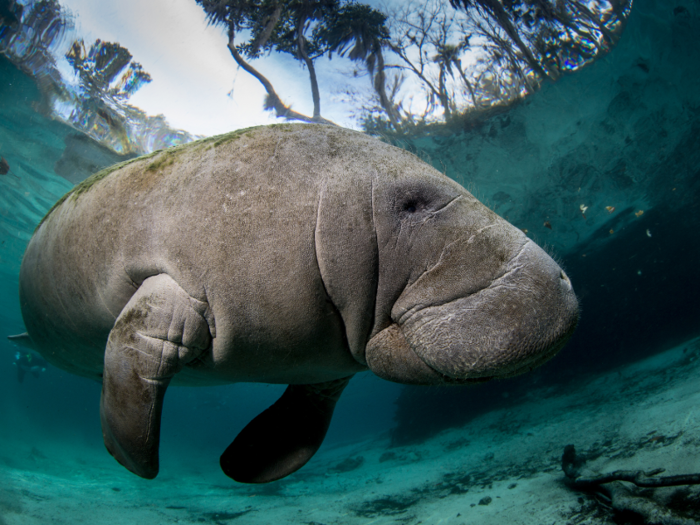
Source: Seaworld Parks and Entertainment
Though one might assume manatees' large bodies are mainly made up of fat, their intestines and stomach make up a bulk of their abdominal mass.
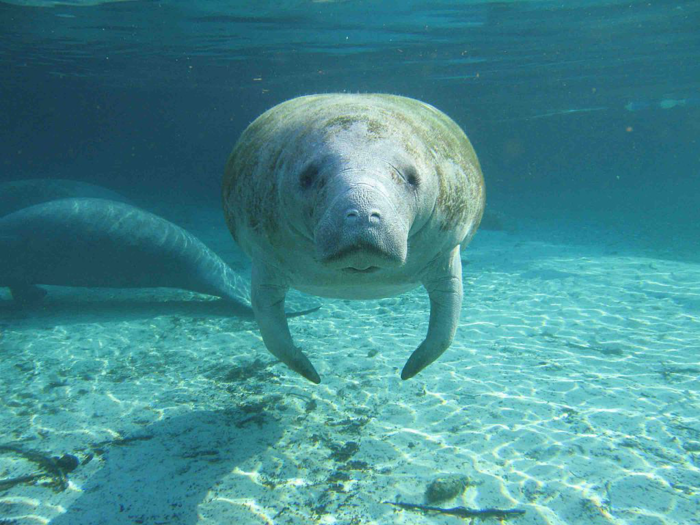
Source: Save the Manatee
Don't let their watery habitat and natural swimming abilities fool you. These gentle giants are actually mammals and typically surface every three to five minutes for air.
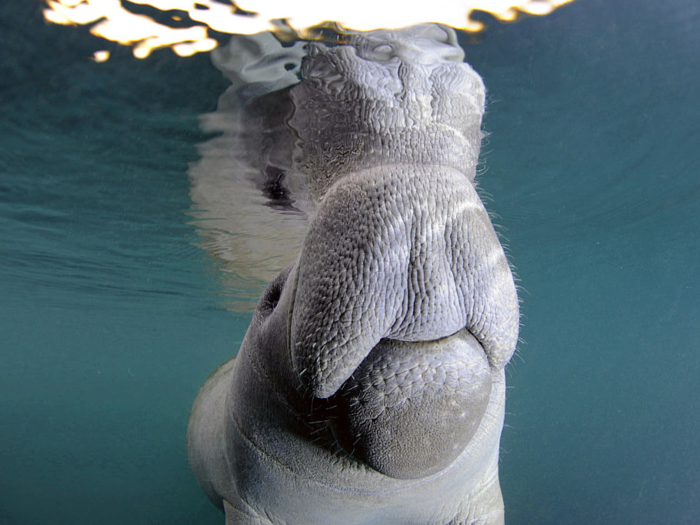
Source: Smithsonian
Because these docile creatures are so slow, algae sometimes grow on their bodies, changing the color and texture of their skin.

Source: Seaworld Parks and Entertainment
Despite the manatee's aquatic habitat, its closest relative is actually a land-bound giant — the elephant.
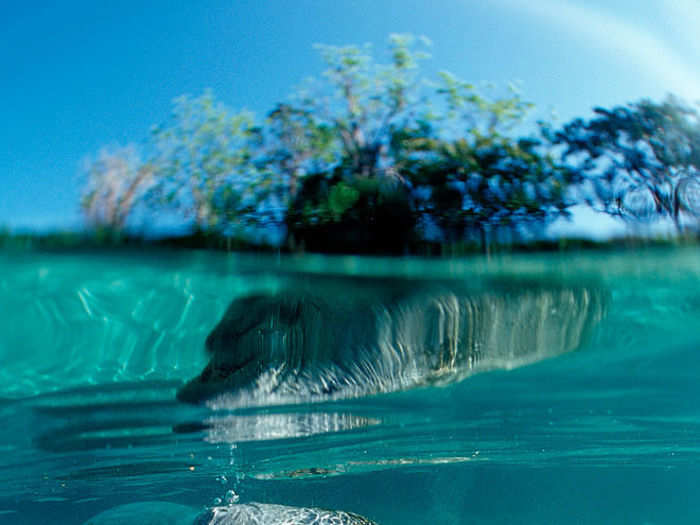
Source: Save the Manatees
While manatees have no natural predators, they're threatened by human activities like hunting, boating, and jet skiing. West Indian manatees were put on the endangered species list after Florida's numbers dwindled to 1,267 in 1991.
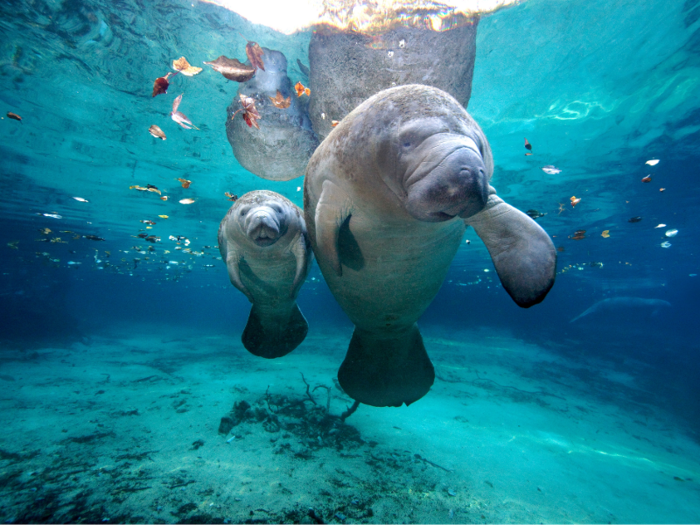
Sources: Smithsonian, Time, The Christian Science Monitor
Fortunately, the species was taken off the endangered list in 2017 after its population rebounded to 6,300 in the wild, although the species is still considered "threatened."
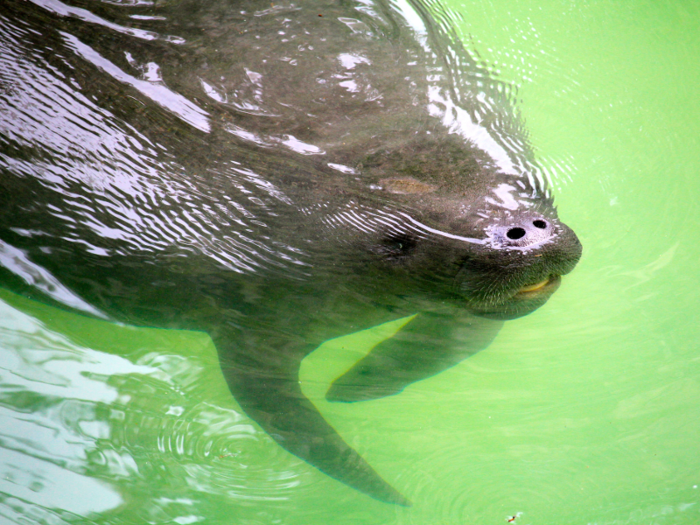
In honor of Manatee Awareness Month this November, make sure you share some knowledge about these gentle giants.
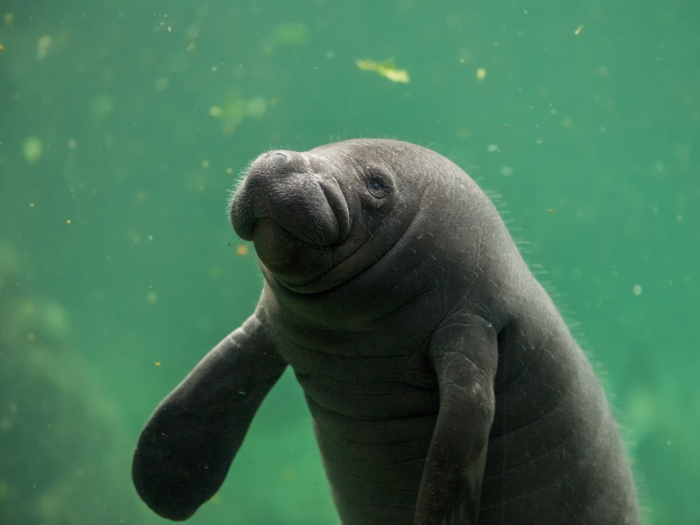
Popular Right Now
Popular Keywords
Advertisement
